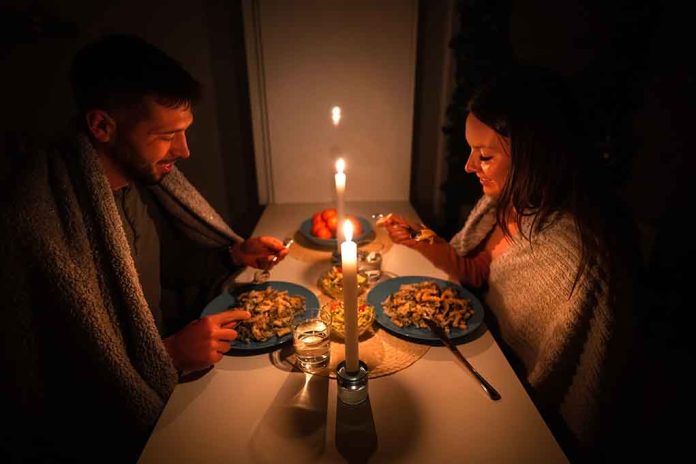(HealthyExaminer.com) – Weather conditions and natural disasters can cause you to lose power in your home. Depending on the time of year, your immediate concerns could be light, heat, or cooling, but one of the most common dangers of power outages is food spoilage. Depending on how long the power has been out, the food in your refrigerator and freezer may no longer be safe to eat. It’s essential to understand how to keep your food safe during a power outage.
What To Do BEFORE A Power Outage
While difficult to predict, being prepared for power outages can help you get through them with little to no food loss. Refrigerators should be kept at a temperature between 35 to 40 degrees Fahrenheit to store food properly, and freezers should be set to zero degrees Fahrenheit or less.
You can also purchase dry ice to prepare for possible power outages. Dry ice can be purchased at most major grocery stores. You’ll need to be at least 18 to purchase it and will need sturdy gloves to handle dry ice. However, to store it, you need a well-ventilated area away from pets and children to avoid carbon dioxide poisoning. If the power goes out, you may need to use blocks of ice, ice packs, or dry ice to keep foods cool.
What To Do DURING A Power Outage
Try to resist opening and closing the refrigerator and freezer doors once the power is out.. Doing so will let out the cool air needed to keep food from spoiling. According to the CDC, keeping the doors closed can preserve food for 4 hours in a refrigerator, 48 hours in a freezer that’s full, and 24 hours in a freezer that’s only half full or less. Beyond that 4-hour window of time, you may need to pull food out of the fridge and put it in a cooler with ice to keep it properly chilled. If the power outage is caused by flooding, you’ll want to remove any food packaged in cardboard or other containers that aren’t waterproof.
Even if the power goes out due to icy winter conditions, you’ll want to avoid placing food outside. While it might seem like colder temperatures are the perfect solution for food preservation, inconsistent or unreliable temperatures could still cause food to spoil even if there’s ice on the ground.
What To Do AFTER A Power Outage
After the power outage has ended, there are several steps you’ll need to take to maintain food safety. You’ll want to go ahead and throw out any food that is discolored or has a foul odor. If the power has been out for more than four hours, you’ll need to get rid of all perishable items you were not able to move to a stable location.
You should also throw away any canned foods that are damaged, bulging, dented, or open. Foods canned at home may also need to be disposed of in the event of power outages due to flood conditions. Unharmed canned goods can be sanitized with a bleach and water solution or can be boiled.
Never taste food to determine if it’s safe to eat. Unless you can verify with a thermometer that the food temperature is still below 40 degrees Fahrenheit, you’ll need to get rid of it.
Power outages are just a part of life. Preparing for them can help reduce food waste and loss. Even though it may be tempting to try to keep cool items after an extended power outage, it’s a much better idea to keep food safety in mind and avoid illness by following these recommendations.
Copyright 2022, HealthyExaminer.com














